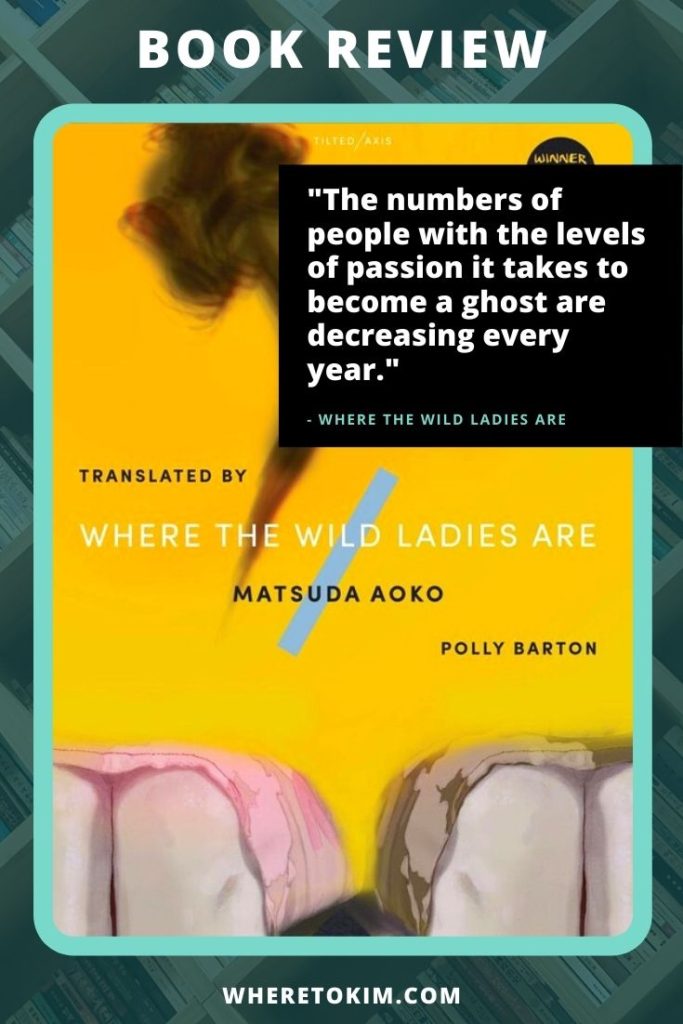In Where the Wild Ladies Are, Japanese author Matsuda Aoko links the present to the past by incorporating Japanese ghost and yokai tales into a modern world.
Where the Wild Ladies Are synopsis
I never thought of Okon and Oiwa as terrifying monsters. If they were terrifying, so was I. If they were monsters, that meant I was a monster too.
Witty, inventive, and profound, Where the Wild Ladies Are is a contemporary feminist retelling of traditional ghost stories by one of Japan’s most exciting writers.
In a company run by the mysterious Mr Tei, strange things are afoot – incense sticks lead to a surprise encounter; a young man reflects on his mother’s death; a foxlike woman finally finds her true calling. As female ghosts appear in unexpected guises, their gently humorous encounters with unsuspecting humans lead to deeper questions about emancipation and recent changes in Japanese women’s lives.
Book review
One of the returning tropes in this book is the inequality between men and women when it comes to opportunities. Take the following quote: “Over the years, how many women had seen their talents magically disappearing in that way? How many men had seen talents they didn’t possess magically summoned into existence?”
In many stories, the female narrators feel like monsters. The one is Smartening up is convinced that all women are prisoners to their body hair because it just keeps growing back. This sentiment is a reference to having to live up to other people’s expectations. If you don’t do that, you will become a so-called hairy monster and be shunned by society for looking different unless you can turn this particular trait into a superpower.
Matsuda Aoko took inspiration from traditional Japanese ghost and yokai tales for the stories in Where the Wild Ladies Are. That’s unknown territory for me, and perhaps the stories work better for someone with a Japanese background. If you don’t know the inspirational sources, then you probably miss out on the wow feeling you usually get when you recognize a reference. I did get some, like the comparison of someone who is unemployed in the modern world to a rōnin or a no-sales-visitor sticker that functions as a talisman to keep the ghosts out.
If you have been to Japan, then you will recognize some of the places featured in the story. If I could redo my trip to Japan, I would not only have visited Himeji Castle in Himeji, but also Okiku Well. There’s still so much to see in Japan.
Through her stories, Matsuda Aoko shows her readers different aspects of Japanese culture. Most of the stories aren’t memorable; some are good. I enjoyed Jealousy and Having a blast the most because they had this funny undertone that felt just right. These two stories might not be for everyone, but they were the most refreshing stories in the collection. As for the other stories: while they feature ghosts, they still lack spirit.
In Where the Wild Ladies Are, Matsuda Aoko links the present to the past, incorporating traditions and legends into life in the 21st century. That’s what I find the most interesting about this story collection. I can’t recommend this book though, as I didn’t enjoy the stories enough.
Translated from Japanese by Polly Barton.
Interested?
Buy your copy of Where the Wild Ladies are from Amazon.co.uk for the UK version (published February 2020) or Amazon.com for the US version (available 20 October 2020).







